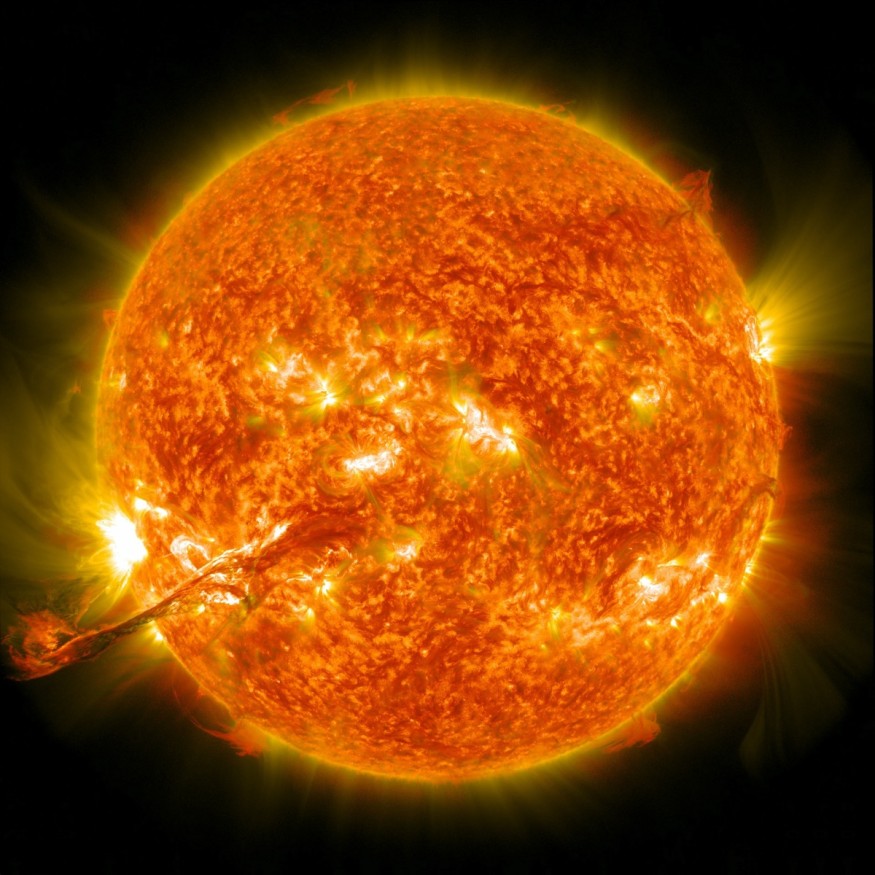A solar storm that might occur in the next several days is imminent and could threaten Earth. According to a recent report, a large solar flare has erupted from a sunspot and is on its way to Earth. Here is additional information on it.

Another Space Storm Incoming
According to a report from Spaceweather.com, the new sunspot is so large that it is altering how the sun vibrates. The geomagnetic field surrounding Earth is expected to be unstable during the weekend, which might disturb the radio-magnetic sphere, according to the Space Weather Prediction Center of the National Oceanic and Atmospheric Administration (NOAA).
Spaceweather.com reported that a high speed stream of solar wind is approaching Earth with an estimated time of arrival of August 9. High-latitude sky observers should be vigilant for auroras.
Solar Storms
Solar storms produce space weather in the short term, which are disturbances on the Sun that may radiate outward through the heliosphere and impact the whole Solar System, including Earth and its magnetosphere. Space climate is made up of long-term patterns that result from solar storms.
On August 7, a solar wind stream struck Earth. The stream's initial velocity was modest, but as the day went on, it accelerated to more than 600 km/s, eventually resulting in a fairly powerful G2-class geomagnetic storm. This occurrence was not anticipated. Even though the storm is already abating, the solar wind will still be present on August 8 and might cause it to flare up once more.
In an Active Solar Cycle

A large ball of electrically charged heated gas makes up our Sun. As this charged gas travels, a strong magnetic field is created. The solar cycle is a cycle that the magnetic field of the Sun experiences.
The magnetic field of the Sun totally reverses every 11 years or so. As a result, the Sun's north and south poles are reversed. The Sun's north and south poles then reverse directions after another 11 years.
Triggering Solar Activities
The solar cycle impacts sunspots, brought on by the sun's magnetic fields and other surface activities. The amount of activity on the surface of the Sun varies along with the magnetic fields.
Sunspot counts are one method of monitoring the solar cycle. A solar cycle begins when the Sun has the fewest sunspots or at a minimum. Solar activity-and the quantity of sunspots-increases with time.
The solar maximum occurs in the middle of the solar cycle or the time when the Sun has the most sunspots. A new cycle starts when the cycle ends and fades back to the solar minimum.
The Sun experiences larger solar outbursts like solar flares and coronal mass ejections more frequently during the solar cycle. Strong explosions of material and energy are released during these eruptions.
Affecting the Planet
On Earth, this behavior may have consequences. For instance, eruptions may interfere with radio communications or result in the aurora, a type of sky light. Extreme eruptions can even have an impact on the planet's power networks.
Studying Space Weather
Sunspot and activity maximums can occur throughout some cycles. There may be relatively few sunspots and minimal activity in other cycles. Scientists make significant efforts to increase our capacity to forecast the strength and length of solar cycles. They may use these forecasts to anticipate certain solar circumstances, often known as space weather.
The solar cycle can be forecasted to assist scientists in safeguarding radio communications on Earth and NASA spacecraft and astronauts.
The lifespan of satellite electronics can be shortened by solar activity. Radiation exposure can be hazardous for astronauts who perform work outside of the International Space Station. Satellites can be placed in safe mode, and spacewalks can be postponed if scientists foresee a busy period in the solar cycle.
Related Article : Can We Survive a Catastrophic Solar Storm? What to do When a Solar Flare Hits Earth
For more cosmic news, don't forget to follow Nature World News!
© 2025 NatureWorldNews.com All rights reserved. Do not reproduce without permission.





